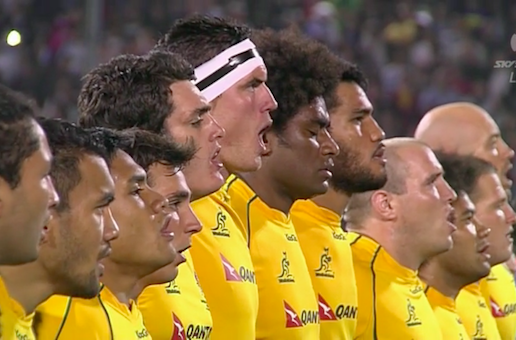When Robbie Deans announced last week that tries were overrated, it wasn’t a throwaway line. A closer look at the scoring stats since September 2011 show that the Wallabies’ newfound grinding style of play has resulted in them breaking the natural statistical laws of rugby.
- Australia are 9th out of the top 10 countries for tries scored
- 61% of our points in TRC 2012 came from penalties vs 40% for the other teams
- The Wallabies have prioritised not losing over winning
Normally post World Cup it seems to abate a little bit but I think what you’ve seen this year is the intensity of games and the resistance in the defensive lines has been retained from the World Cup where you’ve got the ultimate incentive. It hasn’t abated at all and teams are very loathe to let tries in … it’s getting harder (to score tries). R. Deans
Looking at the infographic below, we can see that it has become harder to score tries, but more for the Wallabies than other teams. Australia came ninth out of the top ten rugby nations in tries scored per match since September 2011! However, we also didn’t give too many away either, managing to come fourth in terms of defensive miserliness.
It’s when you dig a little deeper, though — and look at the likelihood of winning games based on tries scored or conceded — that the freaky stuff starts to happen.
When you look at the probability of winning matches based on the number of tries a team scores it seems Deans is right – since 1 September 2011, when the Wallabies have played a fellow tier one nation it really isn’t about scoring many tries: once Australia score one try in a match the probability of winning is 67%; the other nine tier one nations on average have to score three tries in a match to get their probability up past that.
In fact if Australia scores two tries in a game the match is theirs, whereas the other nations have to score four tries to be certain of wrapping the match up.
Basically it’s because we don’t score tries to win our games. In this year’s TRC 61% of the Wallabies’ points came from penalties. The average for the other three teams was 40%.
What gets super freaky is when you look at the probability of teams winning the more tries other teams score against them. Here we can see that for all other teams, the more tries they have scored against them, the less chance they have of winning. Logical.
Not so for the Wallabies, as the infographic below illustrates. Score no tries against them, they have a 50% chance of winning. Score one try against them, and they are more likely to win at 67%. Score two tries and they’ll even move to an 80% chance of winning. They’re the rugby version of the undead, they just keep coming at you!
The Wallabies have learnt to not lose, rather than to win.
So what does all this mean?
On the one hand you could say that this grinding style has taken a giant, steaming piss into the champagne flute of Australian rugby. Gone is the play we grew up idolising and beating our chests about — you’re basically watching a pommy team in the Green and Gold.
On the other hand, you look at the win rate. Over the same period of the stats above, Australia is second in the world for win percentage at 65% (just behind are the Saffas and Poms on 64%). This level of performance is dragging Deans’s Wallaby win percentage up, now to 58%. Deans supporters will also point to this year’s injury list perhaps as justification (although this style of play was brought in prior to the World Cup in 2011, when injuries weren’t nearly so problematic). Perhaps this is Deans injecting the backbone and consistency into the Wallabies that we’ve lamented for so long?
Either way, these dramatic stats indicate that perhaps Dingo really is a coaching genius. Whether that’s for good or evil will depend on your point of view.


